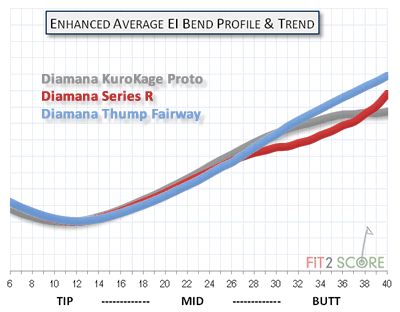Mitsubishi KuroKage XM Driver
By Russ Ryden, Fit2Score, A Dallas Fort Worth Club Fitter & Club Maker
The Golf Center at the Highlands, Carrollton Texas

Some shafts are simply too good to change. The Mitsubishi KuroKage Proto TiNi is one such shaft. The new KuroKage XM is the KuroKage Proto with new graphics and a wider range of weights. It is promoted as a mid launch – mid spin shaft. I view launch and spin as a propensity not an absolute. Your angle of attack, the club head loft, where you strike and how the shaft, interacting with your loading and release, deliver the head are all part of the launch and spin equation. The XM, in the right hands, is not what I would define as mid launch / mid spin. But, shaft companies have to fill in those words for the golfing public.
The Mitsubishi website has always presented shaft EI graphics alongside their verbal descriptions. If you spend years looking at those charts and testing them on a wide range of golfers they being to have meaning. I view the difference between the KuroKage XM and the KuroKage XT as more feel related than launch. The XT has a stiffness bump low mid. That bump does contribute to a lower launch, but more important, gives a better sense of tip stability to a hard swinging late release golfer.
The technical discussion, measurements and testing results are available only to registered readers
To continue reading this section of the review, you must be registered at a higher level membership.
Russ













